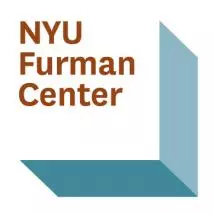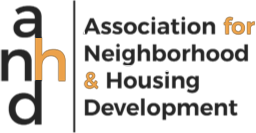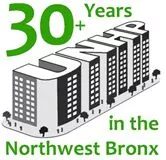Mapping Displacement and Gentrification in the New York Metropolitan Area
The New York metropolitan region is thriving, but its neighborhoods are experiencing many different forms of displacement. Wages of low-income residents—as well as housing policies—have not kept pace with the acceleration of housing prices, resulting in significant demographic shifts in the 31-county, tri-state region.
UC-Berkeley, with the help of students at NYU’s Center for Urban Science and Progress (CUSP), analyzed regional data on housing, income, and other demographics to better understand and predict where gentrification and displacement is happening and will likely occur in the future.* Assisting in the validation of the analysis were the Local Initiatives Support Corporation New York City (LISC NYC), as well as nine different community and civic organizations. It is our hope that the visualization of these nine types of neighborhood change will help communities better understand their trajectories and stabilize their resident population.
UDP conducted this research project in close consultation with LISC NYC, which sought to build on its 2016 Convening on Neighborhood Change and Displacement with a tool that provides a long-term, regional framework as context for the significant ongoing policymaking on housing and community stability. Understanding displacement in New York is critical given its housing crisis: rising rent burdens, homelessness, loss of rent-regulated housing, public housing deterioration, and more. With new interest in the New York region from big tech firms like Amazon, Apple, and Google, as well as new federal policies like Opportunity Zones and local actions that seek to harness market-rate development to boost the supply of affordable housing, it is time for New York to look more carefully at displacement.
* Note: Please see the students’ project here.
Key Findings
The UDP typology examines processes of gentrification and displacement in low-income neighborhoods (with a median household income at 80% of the regional median) and exclusion in moderate-to-high-income neighborhoods (at 80% of the regional median or above). Neighborhoods are categorized as exclusionary when rents are so expensive that low-income people are excluded from moving in—another form of displacement. This version of the gentrification and displacement typology adds two new types: ongoing displacement, to capture the change processes in neighborhoods that are losing low-income households but not gentrifying; and super gentrification or exclusion, which identifies already gentrified or long-term exclusive neighborhoods with a median household income at 200% of the regional median.
In 2016, over one-third of low income households across this 31-county region live in low-income neighborhoods at risk of or already experiencing displacement and/or gentrification pressures– totaling over 1.1 million low-income households. We found that moderate and high-income neighborhoods lost almost twice as many low-income households than more inexpensive neighborhoods, suggesting a need to examine displacement more carefully in exclusive areas. Communities outside of the metropolitan core, such as Hudson River communities Peekskill and Newburgh, are often not seen as facing displacement risks. The maps show that some of these towns are indeed undergoing their own displacement processes in what might be seen as a “ripple effect.”
- In 2016, over one third of low-income households lived in low-income neighborhoods at risk of or already experiencing displacement and gentrification pressures, comprising 24% of the New York metro area’s census tracts.
- Almost 8% of low-income households in the metro region are living in moderate to high income neighborhoods that are experiencing advanced stages or super gentrification.
- Over 12% of neighborhoods in the region are gentrifying or in an advanced state of gentrification, while almost 9% are experiencing displacement without gentrification
- Almost half of low-income households live in low- or moderate/high-income neighborhoods that are stable.
- There are 314 super-gentrified or exclusive neighborhoods in the metro region, forming a ring of very high income suburban and exurban communities around New York City, in addition to creating islands of exclusion in Manhattan, Brooklyn, and Queens. Most of these have long been exclusive, but some 71 of these neighborhoods transitioned between 1990 and 2016 from low-income areas to areas where the median household income, at $140,000, was greater than 200% of the regional median in 2016.
- Last year, 515 census tracts in the region were designated as Opportunity Zones under a program that provides tax incentives for private investment in low-income urban areas. Overall, 23% of the tracts are located in gentrifying neighborhoods, and an additional 30% are in neighborhoods at risk of gentrification.
- Almost 90% of public housing developments are located in low-income tracts, but just 21% are located in tracts that are gentrifying.

Sponsor: New York Local Initiatives Support Corporation
For nearly four decades, Local Initiatives Support Corporation (LISC) NYC has supported local champions to advance equitable development of historically underinvested neighborhoods. To date, LISC NYC has invested over $2.87 billion, leveraging an additional $6 billion in low-income communities, resulting in over 38,000 affordable homes built and preserved as well as 1.8 million square feet of retail and community space created. The primary challenge facing low and moderate-income NYC neighborhoods today has shifted from disinvestment and a lack of access to capital to hyper-investment and the rising cost of housing. This trend is threatening to displace low-income residents of the neighborhoods that LISC NYC community-based partners have traditionally served. In September 2016, LISC NYC organized and hosted, along with the Federal Reserve Bank of New York and the NYU Furman Center, a convening of community development practitioners, policymakers, government officials, researchers, and funders to explore what the latest research tells us about neighborhood change and displacement, identify gaps in data, learn about anti-displacement and equitable development strategies from other cities, and discuss with key stakeholders the challenges and opportunities to implement effective anti-displacement initiatives in New York City. LISC NYC’s sponsorship of the CUSP Capstone project is a follow up to that convening. Its primary role has been to advise the project and connect the CUSP team with community-based partners on the front lines of gentrification and displacement in NYC in order to inform the work.
Contributing Institution: New York University’s Center for Urban Science and Progress
The Center for Urban Science And Progress (NYU CUSP) is a unique public-private research center that uses New York City as its laboratory and classroom to help cities around the world become more productive and livable.












